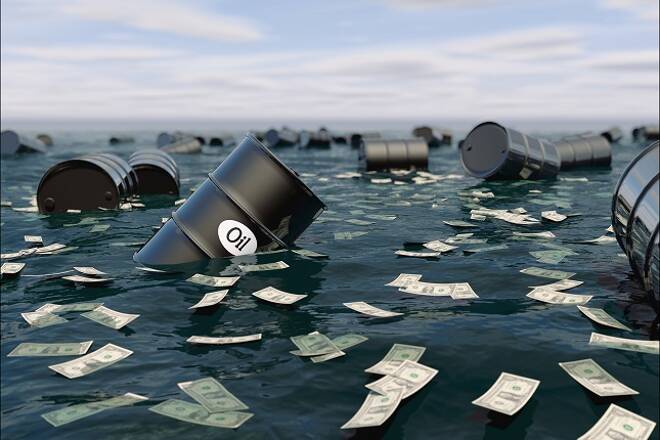Advertisement
Advertisement
Demand Destruction Bigger Concern than Production Cuts
By:
The world is going to be oversupplied with crude oil ahead of the May 1 production cuts. The tanks are going to be filled as well as the off-shore tankers. The move by OPEC+ is not strong enough to tighten up supply over the short-run.
OPEC and other major oil producing allies on Sunday finalized a historic agreement to cut production by 9.7 million barrels per day. The news was priced into the markets late Thursday when crude oil futures plunged over 4%. The key question traders are asking themselves Sunday afternoon is whether this is bullish news or bearish news.
Normally, a cut in supply as seen as bullish, but we are not in “normal’ times and we have a spreading virus that is rapidly destroying demand with no end in sight for its destruction.
In my opinion, traders will be focusing on the demand side, which likely means more near-term pain for oil producers. We’ve seen over the past few years that OPEC and its friends can turn the valves controlling the supply of crude oil in either direction any time they want to, but when it comes to demand, they have no such control and this is what is scaring oil producers, particularly in the United
States.
The governments of Saudi Arabia and Russia essentially control their national oil companies. The United States does not. The U.S. oil companies are owned by shareholders and the decisions to produce or not produce are determined by corporate executives, and not the Royal House of Saud or Russian President Putin.
Will the production cuts be enough to save the global economy? Probably not, but then again they are intended to do so. Will the production cuts be enough to save U.S. oil companies? Again the answer is probably not, there will be casualties during this crisis.
Whiting Petroleum the “First Domino” to Fall
On April 1, the Chapter 11 bankruptcy filing for Colorado-based Whiting Petroleum served as a grim omen of things to come, experts say. They were the first U.S. shale producer to go under since the start of the year, when oil prices began to fall.
Granted Whiting was a small producer, but the next hit is likely to be the more capital intensive producers.
“I do suspect there’s a wall of these issues about to hit the market,” said Daniel Hynes, senior commodity strategist at ANZ. “And clearly banks are going to be running the ruler over a lot of these clients now and looking at credit limits and the like. So I think (Whiting) is the tip of the iceberg.”
Mixed Reaction to the Deal
“This is at least a temporary relief for the energy industry and for the global economy, Rystad Energy’s head of analysis Per Magnus Nysveen told CNBC in an email. “Even though the production cuts are smaller than what the market needed and only postpone the stock building constraints problem, the worst is for now avoided.”
Chris Midgely, S&P Global Platts’ global head of analytics, said that the cut isn’t enough “to plug the 15- to 20-million b/d near-term imbalance in the marketplace and avoid tank tops in May.” The cut “won’t be enough to bring sustainable, restorative support to oil prices, not unless OPEC goes further,” he added.
Near-Term Bearish, Longer-Term Friendly
The world is going to be oversupplied with crude oil ahead of the May 1 production cuts. The tanks are going to be filled as well as the off-shore tankers. The move by OPEC+ is not strong enough to tighten up supply over the short-run. Maybe during the second half of the year, we could start to see some light at the end of the tunnel, but at this time the market is likely to remain near record-breaking oversupply levels.
Furthermore, during the second half, we’re expecting to see some improvement in demand, but don’t expect that to return to normal until there is a vaccine for coronavirus.
Given the bearish short-term outlook, we’re expecting more oil company casualties. Let’s just hope it doesn’t spread to the banking sector that provides the loans and other financial backing to sustain the wells.
About the Author
James Hyerczykauthor
James Hyerczyk is a U.S. based seasoned technical analyst and educator with over 40 years of experience in market analysis and trading, specializing in chart patterns and price movement. He is the author of two books on technical analysis and has a background in both futures and stock markets.
Advertisement
